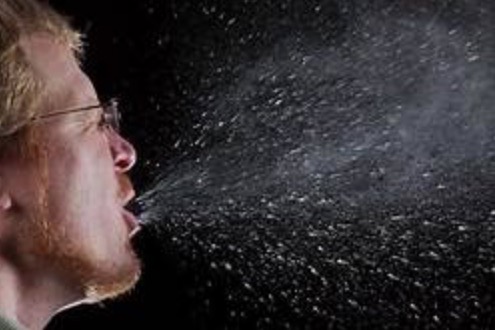I have spent the last 40 years of my professional life inside athletic clubs, wellness centers, and fitness facilities. I found they share a common goal of creating an array of programs/classes that encourage a variety of metabolic and respiratory responses. By coincidence, each discovered the programs/classes with the highest level of member adherence included some form of social gathering and some degree of direct physical contact. Each also shares the common belief that regular participation in their programs/classes improves the health (physical, emotional, and spiritual) of their members.
I believe the decision to re-open the doors of every athletic club, wellness center, or fitness facility needs to be made objectively and without personal bias. The fundamental question is “Are you prepared to limit the human to human transmission of the coronavirus when you open the door and let the coronavirus inside the 4-walls of your facility?”
Scientists, objectively believe the coronavirus enters the human body through two doorways.
The first is by inhaling the virus via microscopic airborne particles. The second is via direct physical contact with the virus droplets. These objective beliefs are the rationale behind their decisions to recommend a 6 ft. physical distancing between humans and to limit social gatherings to a maximum size of 10-people. My professional hesitation in accepting these two restrictive guidelines is they assume individuals are metabolically sedentary and/or their breathing (respiratory volumes) remain low.
The last 90 days have allowed scientists to learn more about the novel or newly discovered coronavirus. Initial findings were that individuals who become infected with the coronavirus have a 2-4-day period of no remarkable symptoms, yet they are still able to infect other individuals. Next, a relatively large number of infected individuals will continue to show no remarkable symptoms of being infected. Next, those individuals who do begin to experience difficulties will have symptoms that vary from mild to troubling, depending on their current health status (presence of co-morbidity diseases). Lastly, there is a percentage of those infected
individuals who will succumb to the coronavirus.
Looking ahead, the next 90-180 days of ongoing data collection will allow scientists to contrast the severity of the coronavirus against previous world-wide Pandemics. Equally important to every quarantined American is the ability to contrast the numerical risks of acquiring the coronavirus against other U.S. medical conditions and/or deadly diseases. This statement is relevant because 50% of the medical conditions in the U.S are the results of poor lifestyle decisions – they are not attributed to the absence of medical cures or the lack of medical surgical procedures. Keep in mind, it is not illegal in the U.S. to make poor health choices with regards
to personal hygiene, vaccinations, preventative medical screens, inactivity, smoking, obesity or alcohol consumption.
In my mind, the single most alarming wake-up call for every re-opening decision maker should come from the Mount Vernon, Washington Presbyterian Church Choir. This group of sixty asymptomatic singers gathered on March 10 for a routine practice session but refrained from their usual hugs, handshakes, used hand sanitizers, and were aware of social distancing during their 2 ½ hour choir practice. Unfortunately, three weeks later forty-five of the singers became symptomatic with the coronavirus disease, of which three required hospitalization and two died.
I believe the singers inability to stop the spread of the virus provides great insight as to the decision to re-open traditional exercise classes within athletic clubs, wellness centers, and fitness facilities. In essence, the singers practiced social distancing, avoided physical contact but 75% of the singers still became infected. The deeper questions as to why singing was able to trigger a higher rate of symptomatic coronavirus transmission should include;
- Was the broader spread of the airborne coronavirus droplets due to the more forceful and demanding exhalations needed for singing?
- Did the lengthy duration of the practice increase the risk of the spread?
- Were the airborne coronavirus droplets able to go deeper into the singer’s lungs because of the more forceful and demanding inhalations?
- Did the size of the room limit the amount of fresh air flow into and out of the room?
The answers to these questions should be considered before re-opening any facility that encourages a group of individuals to gather for a fixed period of time, in a fixed size room, and requires them to increase their breathing rates.
In my professional opinion, the toughest challenge behind the decision to re-open an athletic club, wellness center or fitness facility is deciding who will make the decision that it is safe to reopen the front doors and let the coronavirus in. Let me explain that statement by comparing/contrasting the decisions each owner made before their initial Grand Opening against the decisions needed to re-open that same facility during a global pandemic.
Initially, each new facility relied on outside organizations to make the majority of decisions as to when they could open the front door and let their employees and consumers inside. For example, Federal, State or county statutes were involved in making decisions regarding; final construction checklists and safety permits, all legal documents and, new membership contracts. In essence, someone else made the early decision to safely open the front door. Additionally, prior to Grand Opening, each facility relied on outside research organizations to determine safe chlorine levels within the pools, sanitational requirements for showers/locker rooms, as well as certifications for their personal trainers, health coaches, and nutritionists. These outside research organizations created an extra layer of buffering between members who inquired about correct weightlifting techniques, proper stretching guidelines, ideal bodyfat levels, adequate fluid/fuel intake, and safe heart rate training zones. In essence, someone else made the decision regarding an individual’s safety when exercising inside the 4-walls of your facility. Regrettably, nobody has ever bothered to ask about the safety or risks of groups exercising inside any facility. In 1982, Jane Fonda put on a colorful pair of leg warmers and created a charismatic,
musical-themed environment that preached fun and cosmetics over the purposeful science of cause-and-effect health outcomes. By contrast, today’s 2020 coronavirus will demand facilities who encourage groups to gather and exercise – or sing – to determine and evaluate those neglected health risks before re-opening their front doors
For example, prior to the coronavirus a certified spinning instructor would make sure participants had the correct bicycle seat height, understood their ideal heart rate zones, and had adequate fluids prior to starting the spinning class. The overwhelming majority of instructors created a memorable experience that left participants physically exhausted, drenched with sweat, gasping for fresh air, and slightly hard of hearing, but each participant was convinced that this was the healthiest hour of their day. Even more impressive, some of those participants made a quick 5-minute trip to the restroom and made it back in time for the next class – hoping there was an empty bike that they could jump on and start pedaling to the music.
Some of the participants thought, but never dared to ask;
- How often are these bikes sterilized?
- Is the music level safe for my long-term hearing?
- Why is the studio door propped open?
- Is it okay to move if the person next to me doesn’t have a towel and is constantly coughing and really sweaty?
- Is the air supposed to be so thick and humid in here?
- How often do you sanitize the floors?
I have found the above spinning class scenario to be the norm, and it demonstrates a lack of desire within the athletic clubs, wellness centers, and fitness facilities to gather and publish credible research concerning group classes. Unfortunately, this lack of attention will become apparent to all members once the front doors eventually re-open. Tomorrow’s group class participant will notice new cleaning procedures, staggered class schedules, different ventilation systems, and greater distance between participants. Each member should certainly wonder if all of these new changes are solely due to the 2020 coronavirus—or did their favorite facility choose to ignore the possible increased health risks associated with intense group exercise. Keep in mind, everyday consumers believed and accepted the updated health risk data concerning cigarette smoking on airplanes, carbon monoxide testing, concussion protocols for contact sports and texting while driving.
My biggest reason for mentioning the lack of group exercise data collection involves the decision behind forcing members to wear masks when exercising. If these facilities had collectively chosen to gather their own ongoing research, then they could quickly provide answers to the obvious questions about forcing a member to wear a mask when exercising;
- What are the health risks of restricting the flow of oxygen during exercise?
- What is the risk of limiting the release of carbon dioxide with exercise?
- Will wearing a mask during exercise limit fluid intake when exercising?
- Will wearing a mask during intense exercise trigger asthma attacks or other pulmonary conditions?
In other words, does forcing a member to wear a mask cause a significantly increased health risk for fainting, falling, dehydration, or needing medical assistance when exercising? If yes, then what else can be done to limit the amount of circulating airborne coronavirus droplets?
The measurable benefits of being able to provide answers to these questions would include; calming the fears of returning members, retaining memberships, and increasing the credibility of the facility. My suggestion is for athletic clubs, wellness centers, and fitness facilities to become more proactive about detailing the health benefits of their programs/classes. As a group they can agree on the definition or the pillars of health. For example, this would allow each facility a common platform to create unique curriculums that improve emotional stability, reduce the chances of sustaining a skeletal-muscular injury, and minimize the risk of developing a lifestyle-related disease or dying prematurely.
Stated more objectively, today’s athletic club, wellness center, and fitness facility members believe there are health benefits with regular participation in your programs/classes. The majority of them may have some type of emotional or physical injury, have been or are yet to be diagnosed with a medical condition or disease. Understand that every human will have an official cause of death—and they are paying you to provide answers to their questions.
My guess is the first question every returning member will ask when you re-open is: What can I do to avoid or recover from the coronavirus? The list of possible follow-up health related questions will be numerous, and each deserves an objective answer without personal bias. To me this should be the new normal inside every athletic club, wellness center, or fitness facility.
Submitted by,
Dan Zeman, M.S.
Exercise Physiologist
Author; “You’re Too Old to Die Young”




